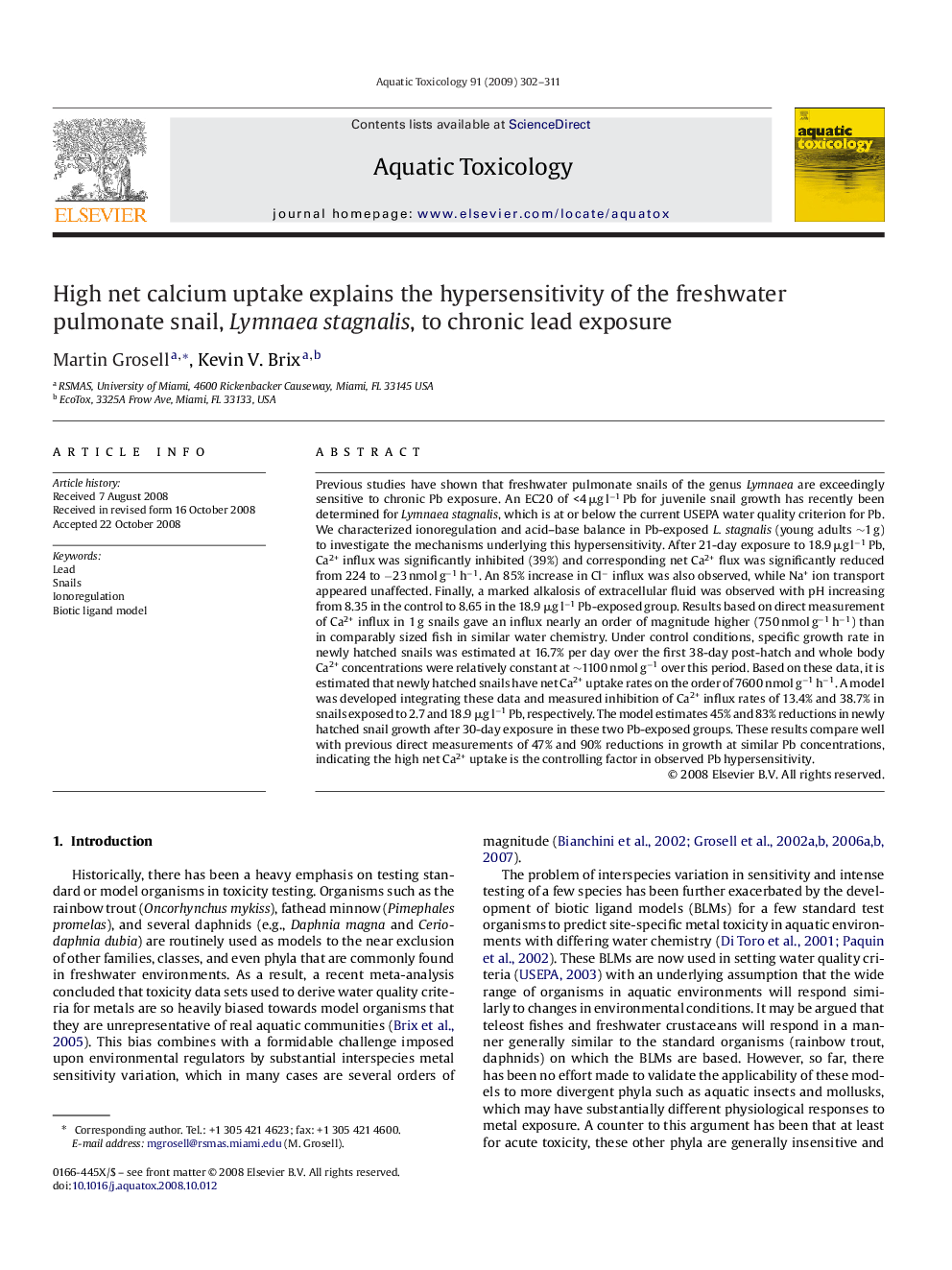| کد مقاله | کد نشریه | سال انتشار | مقاله انگلیسی | نسخه تمام متن |
|---|---|---|---|---|
| 4530287 | 1324694 | 2009 | 10 صفحه PDF | دانلود رایگان |

Previous studies have shown that freshwater pulmonate snails of the genus Lymnaea are exceedingly sensitive to chronic Pb exposure. An EC20 of <4 μg l−1 Pb for juvenile snail growth has recently been determined for Lymnaea stagnalis, which is at or below the current USEPA water quality criterion for Pb. We characterized ionoregulation and acid–base balance in Pb-exposed L. stagnalis (young adults ∼1 g) to investigate the mechanisms underlying this hypersensitivity. After 21-day exposure to 18.9 μg l−1 Pb, Ca2+ influx was significantly inhibited (39%) and corresponding net Ca2+ flux was significantly reduced from 224 to −23 nmol g−1 h−1. An 85% increase in Cl− influx was also observed, while Na+ ion transport appeared unaffected. Finally, a marked alkalosis of extracellular fluid was observed with pH increasing from 8.35 in the control to 8.65 in the 18.9 μg l−1 Pb-exposed group. Results based on direct measurement of Ca2+ influx in 1 g snails gave an influx nearly an order of magnitude higher (750 nmol g−1 h−1) than in comparably sized fish in similar water chemistry. Under control conditions, specific growth rate in newly hatched snails was estimated at 16.7% per day over the first 38-day post-hatch and whole body Ca2+ concentrations were relatively constant at ∼1100 nmol g−1 over this period. Based on these data, it is estimated that newly hatched snails have net Ca2+ uptake rates on the order of 7600 nmol g−1 h−1. A model was developed integrating these data and measured inhibition of Ca2+ influx rates of 13.4% and 38.7% in snails exposed to 2.7 and 18.9 μg l−1 Pb, respectively. The model estimates 45% and 83% reductions in newly hatched snail growth after 30-day exposure in these two Pb-exposed groups. These results compare well with previous direct measurements of 47% and 90% reductions in growth at similar Pb concentrations, indicating the high net Ca2+ uptake is the controlling factor in observed Pb hypersensitivity.
Journal: Aquatic Toxicology - Volume 91, Issue 4, 9 March 2009, Pages 302–311